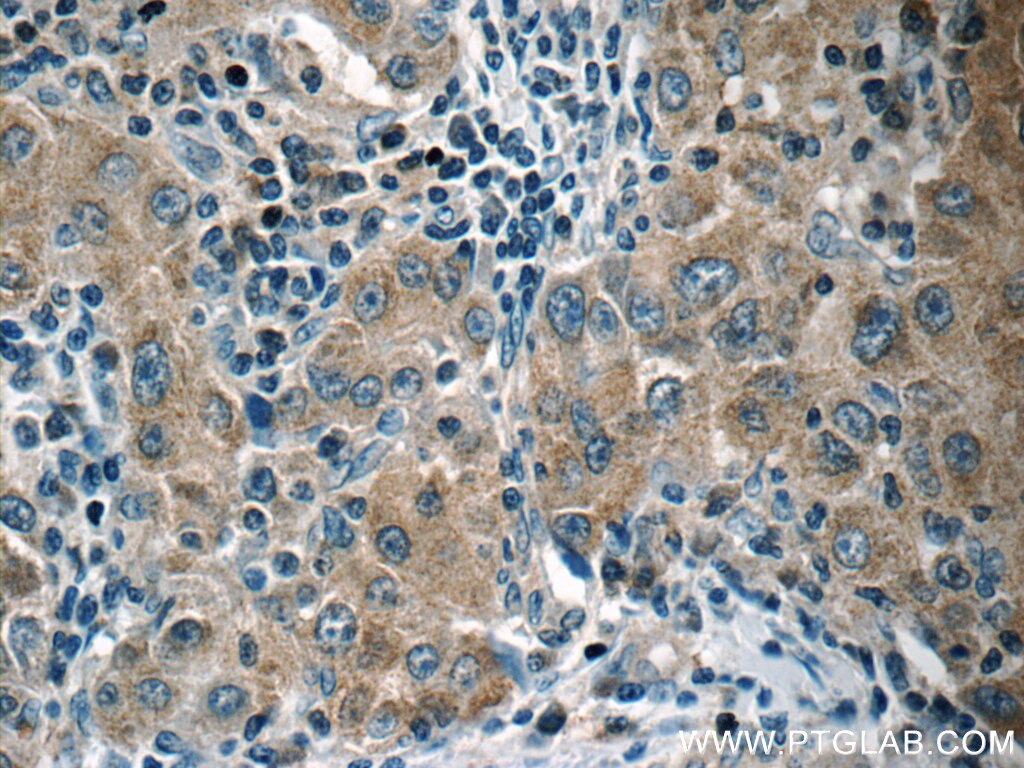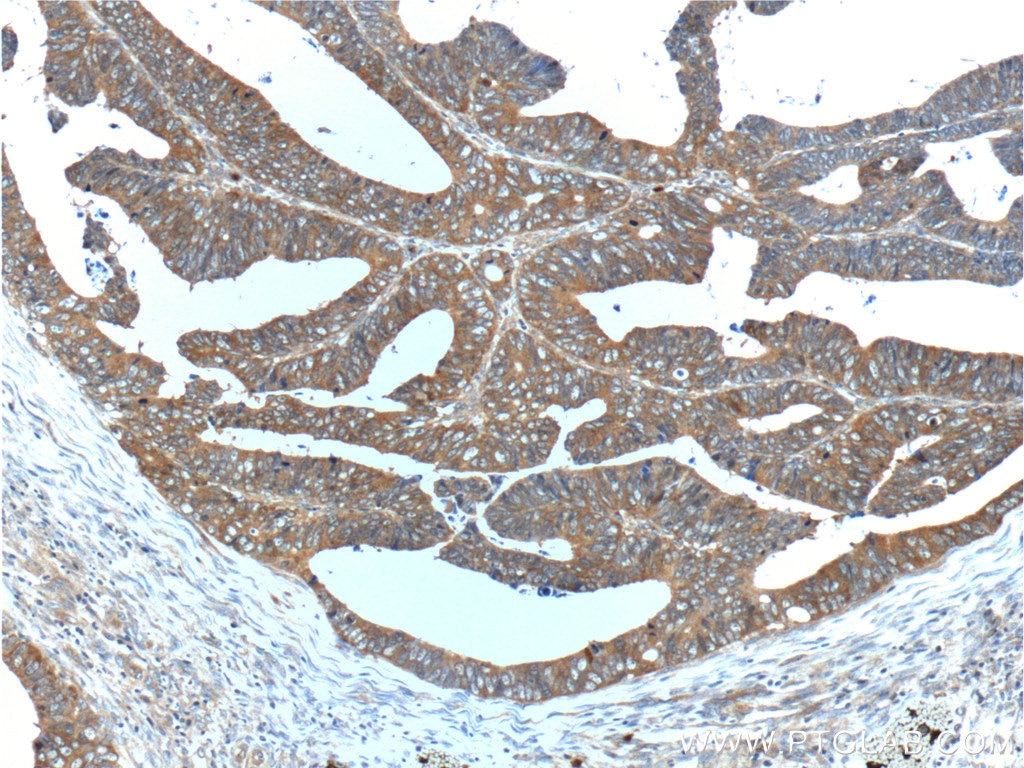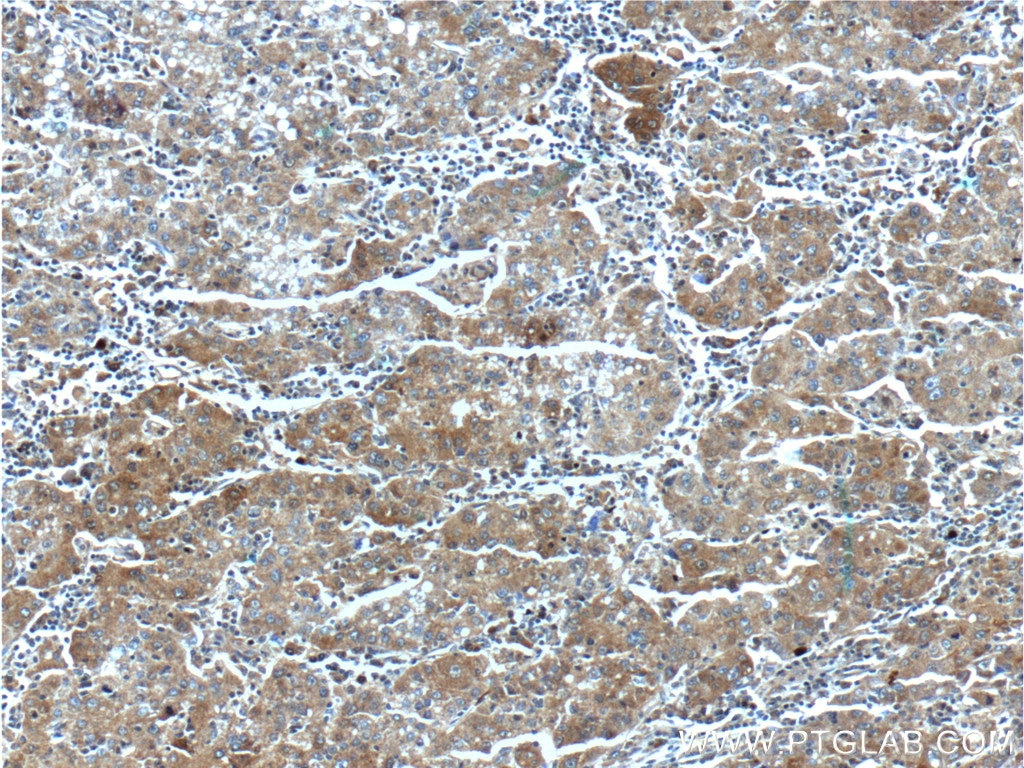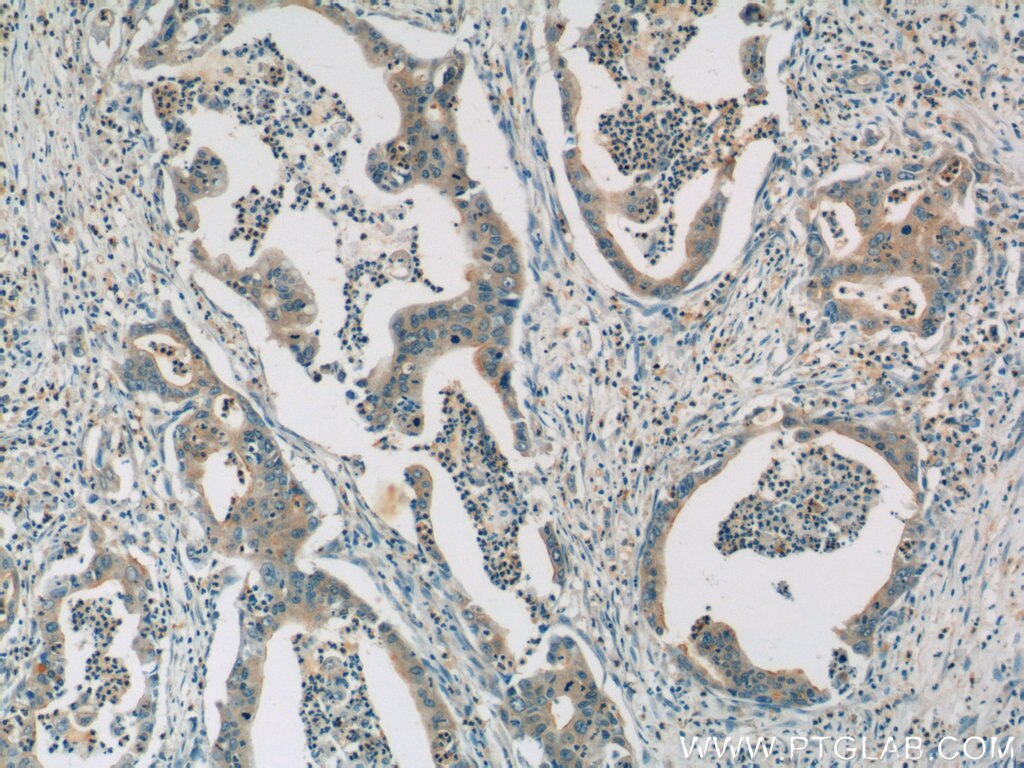HSPH1 Polyklonaler Antikörper
HSPH1 Polyklonal Antikörper für WB, IHC, ELISA
Wirt / Isotyp
Kaninchen / IgG
Getestete Reaktivität
human und mehr (2)
Anwendung
WB, IF, IHC, ELISA
Konjugation
Unkonjugiert
Kat-Nr. : 13383-1-AP
Synonyme
Galerie der Validierungsdaten
Geprüfte Anwendungen
| Erfolgreiche Detektion in WB | MCF7 cells, HeLa-Zellen, humanes Hirngewebe, Jurkat-Zellen, K-562-Zellen |
| Erfolgreiche Detektion in IHC | humanes Hodengewebe, humanes Kolonkarzinomgewebe, humanes Leberkarzinomgewebe, humanes Pankreaskarzinomgewebe Hinweis: Antigendemaskierung mit TE-Puffer pH 9,0 empfohlen. (*) Wahlweise kann die Antigendemaskierung auch mit Citratpuffer pH 6,0 erfolgen. |
Empfohlene Verdünnung
| Anwendung | Verdünnung |
|---|---|
| Western Blot (WB) | WB : 1:500-1:2000 |
| Immunhistochemie (IHC) | IHC : 1:20-1:200 |
| It is recommended that this reagent should be titrated in each testing system to obtain optimal results. | |
| Sample-dependent, check data in validation data gallery | |
Veröffentlichte Anwendungen
| WB | See 3 publications below |
| IF | See 4 publications below |
Produktinformation
13383-1-AP bindet in WB, IF, IHC, ELISA HSPH1 und zeigt Reaktivität mit human
| Getestete Reaktivität | human |
| In Publikationen genannte Reaktivität | human, Maus, Ratte |
| Wirt / Isotyp | Kaninchen / IgG |
| Klonalität | Polyklonal |
| Typ | Antikörper |
| Immunogen | HSPH1 fusion protein Ag4224 |
| Vollständiger Name | heat shock 105kDa/110kDa protein 1 |
| Berechnetes Molekulargewicht | 858 aa, 97 kDa |
| Beobachtetes Molekulargewicht | 110 kDa |
| GenBank-Zugangsnummer | BC037553 |
| Gene symbol | HSPH1 |
| Gene ID (NCBI) | 10808 |
| Konjugation | Unkonjugiert |
| Form | Liquid |
| Reinigungsmethode | Antigen-Affinitätsreinigung |
| Lagerungspuffer | PBS mit 0.02% Natriumazid und 50% Glycerin pH 7.3. |
| Lagerungsbedingungen | Bei -20°C lagern. Nach dem Versand ein Jahr lang stabil Aliquotieren ist bei -20oC Lagerung nicht notwendig. 20ul Größen enthalten 0,1% BSA. |
Hintergrundinformationen
HSP105, also known as HSP110 or HSPH1, belongs to the heat shock protein (HSP) family. Human HSP105 is a high-molecular-weight chaperone protein expressed at constitutively low levels as a cytoplasmic α-isoform and as an inducible nuclear β-isoform on exposure to various forms of stress. HSP105 is constitutively overexpressed in several solid tumors, including melanoma, breast, thyroid, and gastroenteric cancers, and exerts antiapoptotic functions. Recently HSP105 has been identified as a novel candidate biomarker of lymphoma aggressiveness. This antibody recognizes both HSP105α and HSP105β isoforms. Western blot analysis using this antibody detected a major band around 100-110 kDa in Jurkat cells.
Protokolle
| Produktspezifische Protokolle | |
|---|---|
| WB protocol for HSPH1 antibody 13383-1-AP | Protokoll herunterladen |
| IHC protocol for HSPH1 antibody 13383-1-AP | Protokoll herunterladen |
| Standard-Protokolle | |
|---|---|
| Klicken Sie hier, um unsere Standardprotokolle anzuzeigen |
Publikationen
| Species | Application | Title |
|---|---|---|
Nat Cell Biol Heat-shock chaperone HSPB1 regulates cytoplasmic TDP-43 phase separation and liquid-to-gel transition | ||
Mol Ther Nucleic Acids Age-associated changes in microglia and astrocytes ameliorate blood-brain barrier dysfunction | ||
Mol Reprod Dev Identification of Hsf1 as a novel androgen receptor-regulated gene in mouse sertoli cells. | ||
bioRxiv Endothelial Cells are Heterogeneous in Different Brain Regions and are Dramatically Altered in Alzheimer's Disease | ||
J Neurosci Endothelial Cells Are Heterogeneous in Different Brain Regions and Are Dramatically Altered in Alzheimer's Disease | ||
Dev Cell Nuclear import carrier Hikeshi cooperates with HSP70 to promote murine oligodendrocyte differentiation and CNS myelination |
















